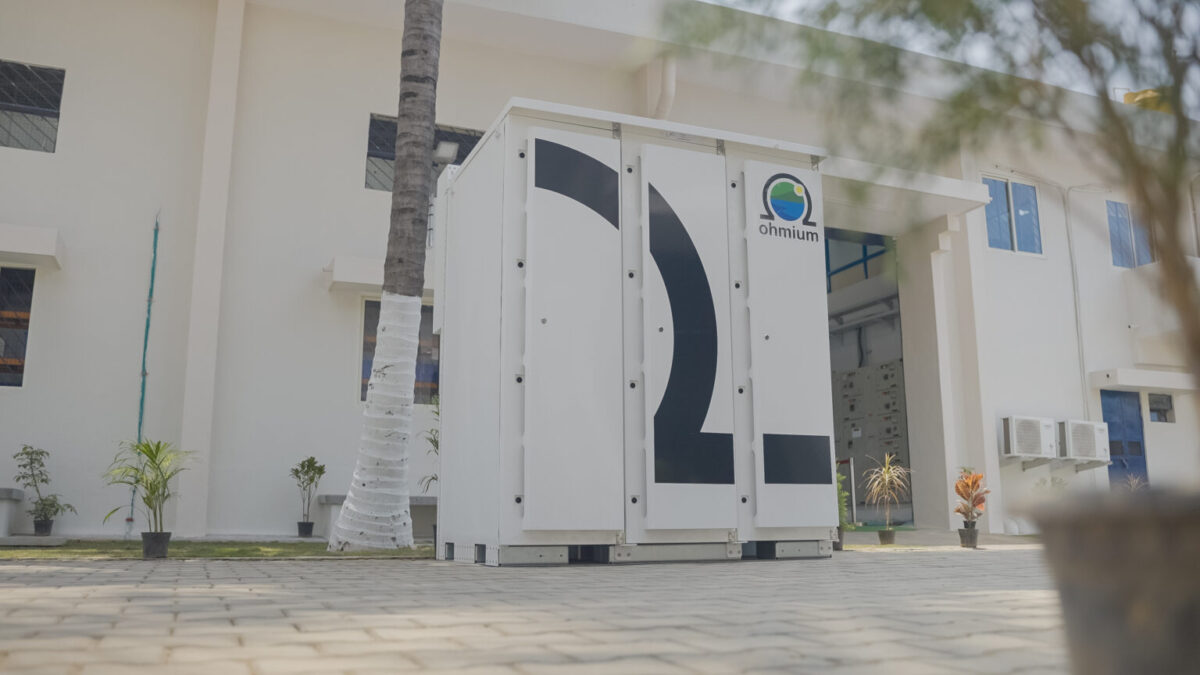From pv magazine USA
While electrochemical batteries can serve many of our needs from mobile devices to vehicles and grid-scale storage, applications such as heavy trucking and industrial processes require huge amounts of energy to be dispatched, making hydrogen an attractive option.
More than 80% of the cost of hydrogen goes toward the electricity needed to split the water atom in a process called electrolysis. When paired with low-cost, emissions free electricity sources like solar or wind, hydrogen production is considered “green hydrogen.”
Ohmium, a California-based company that develops green hydrogen electrolyzers, has found a partner in Aquastill, a provider of desalinated water systems. The two will work together to produce green hydrogen fuel from desalinated ocean water.
Aquastill’s desalination device uses waste heat as an input, and will make use of residual heat from Ohmium’s electrolysis process. This offers co-benefits in cooling Ohmium’s system while powering desalination.
The two companies are currently developing how to optimize integration of the systems, which are highly modular and can be scaled from megawatt to gigawatt scale. Offshore wind energy was identified as a potential electricity source for the modular system, and solar is often a great match due to its high modularity and ability to be installed on bodies of water.
“Utilizing Aquastill’s membrane technology to efficiently produce green hydrogen from seawater has the potential to be a game changer for companies operating in coastal or rural regions that want to affordably and sustainably decarbonize,” said Arne Ballantine, chief executive officer of Ohmium International.
Ohmium’s second generation proton exchange membrane electrolyzer produces at a rate of 9.0 kg per hour with a four-second ramp-up time. It is compatible with three-phase with 480 VAC/60Hz, 415 VAC/50Hz, or 400VAC/50Hz with optional DC integration.
The US Department of Energy (DoE) is targeting lower green hydrogen costs. Launched in 2021, the Hydrogen Shot program has a “1-1-1″ goal, targeting costs of $1 per 1 kilogram in 1 decade. In 2022 renewable energy-fueled hydrogen cost roughly $5 per kilogram, so this target represents a cost reduction of 80% in one decade.
The DoE's investments in green hydrogen are on the rise. In 2021, it supported $285 million in funding, and in 2022, the President’s Fiscal Year 2022 Budget Request included the application for $400 million in funds for green hydrogen development.

This content is protected by copyright and may not be reused. If you want to cooperate with us and would like to reuse some of our content, please contact: editors@pv-magazine.com.




3 comments
By submitting this form you agree to pv magazine using your data for the purposes of publishing your comment.
Your personal data will only be disclosed or otherwise transmitted to third parties for the purposes of spam filtering or if this is necessary for technical maintenance of the website. Any other transfer to third parties will not take place unless this is justified on the basis of applicable data protection regulations or if pv magazine is legally obliged to do so.
You may revoke this consent at any time with effect for the future, in which case your personal data will be deleted immediately. Otherwise, your data will be deleted if pv magazine has processed your request or the purpose of data storage is fulfilled.
Further information on data privacy can be found in our Data Protection Policy.